Lena is the founder of Nagoya Foodie Tour and blog. Originally from Munich, Germany she has been living in Japan for around 5 years. She used to live in Tokyo, Japan’s capital but didn’t like it that much because it is a very big, loud, and crowded city.
Last year Lena and her husband quit our jobs in Tokyo to go on a trip around the world. There she learned a lot about different cultures and I especially enjoyed the times I got to stay with families all over the world.
During the trip, she was also first introduced to food tours and I learned that food is a great way to learn about a place. For this reason, she decided she wanted to create her own food tour in Japan for foreign tourists.
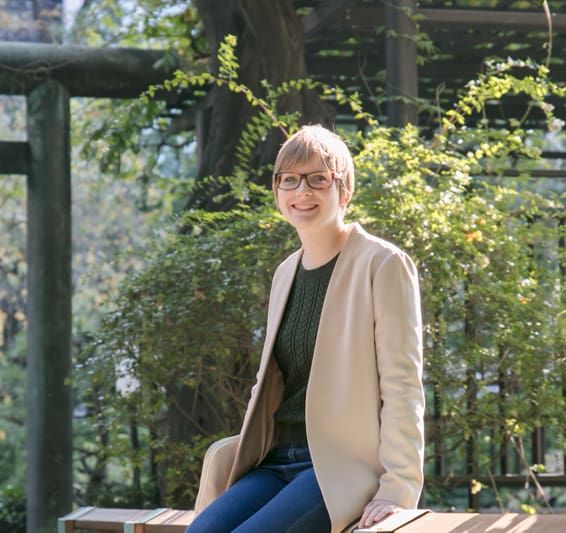
At the end of the trip, they returned to Japan, but because she really didn’t want to go back to Tokyo they settled on Nagoya. It is Japan’s fourth-largest city by population, with enough job opportunities for her husband, and a great place to start a food tour. So that’s what she did.
On her blog Nagoya Foodie, she shares everything that might be of interest to a traveller to Nagoya. The different dishes one should try, and other interesting things to do in Nagoya. Her blog is an extension of her food tour business. She offers food tours that introduce travellers to the local cuisine and through the food to the local culture and history.
What does it feel like living in Nagoya as a foreigner?
Nagoya is a big city but not overwhelmingly so. It is easy to get around by bicycle or public transport. There are many green spaces in the city and because it is a big city there is everything here one might need. All in all, it is very easy to live in Nagoya.
There is also an expat community here that is very open, and it is easy to find people to hang out with who share interests you have in common.
Please tell us about Nagoya Meshi!
My favourite topic of all is Nagoya Meshi. This is what the local Nagoya cuisine is called.
Many people are at least a little bit familiar with Japanese food. They know Sushi (of course) and maybe even dishes like Ramen, Soba or Udon. They might have heard of Okonomiyaki or Takoyaki.
But Nagoya food is different from what is eaten in the rest of the country. It generally has stronger flavours, so it’s great for foreigners who complain that Japanese food is a little bland.
Aka Miso
The favourite ingredient in Nagoya-style cooking is Aka Miso. Miso is a paste made from fermented soybeans. Many people might have heard of it or even tried it in the form of Miso soup. The Aka Miso used in the local Nagoya cuisine is different. It has been fermented for 2 to 3 years which gives the Miso a very strong, and unique flavour, and also a dark reddish-brown colour.
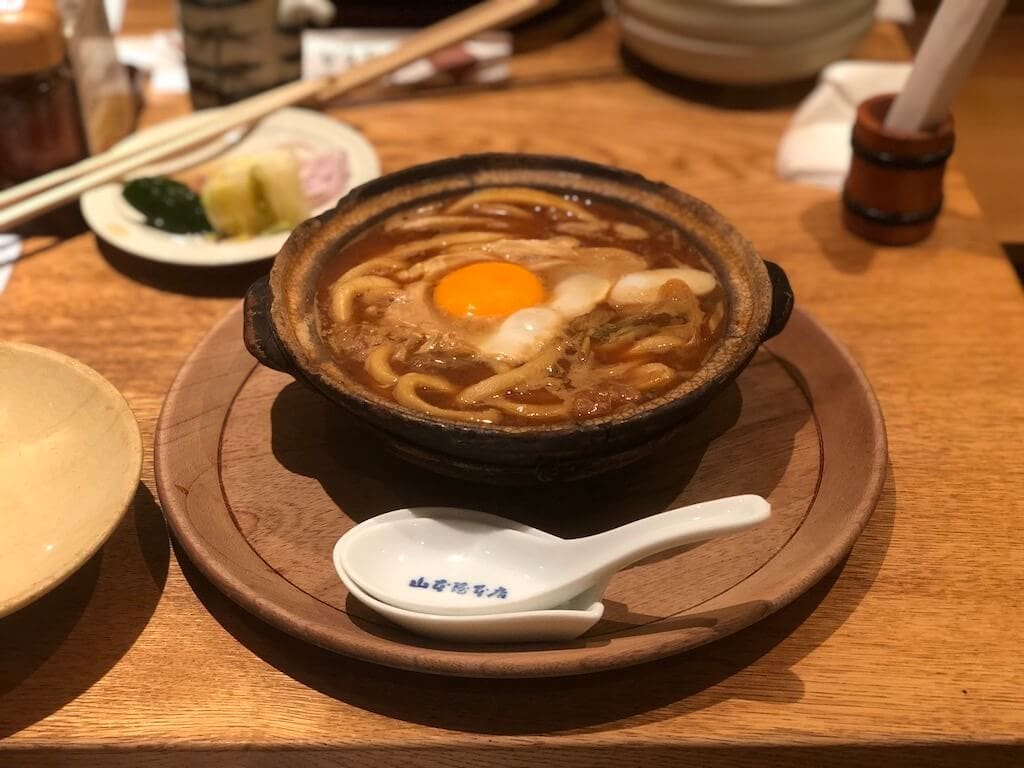
Aka Miso is used in dishes such as Miso Nikomi Udon, (thick, white, and firm Udon noodles cooked in a Miso based broth), Miso Katsu (deep-fried pork cutlets topped with a Miso sauce), or Dote Ni (pork belly stewed in a Miso sauce). These dishes are all incredibly delicious and definitely worth a try.
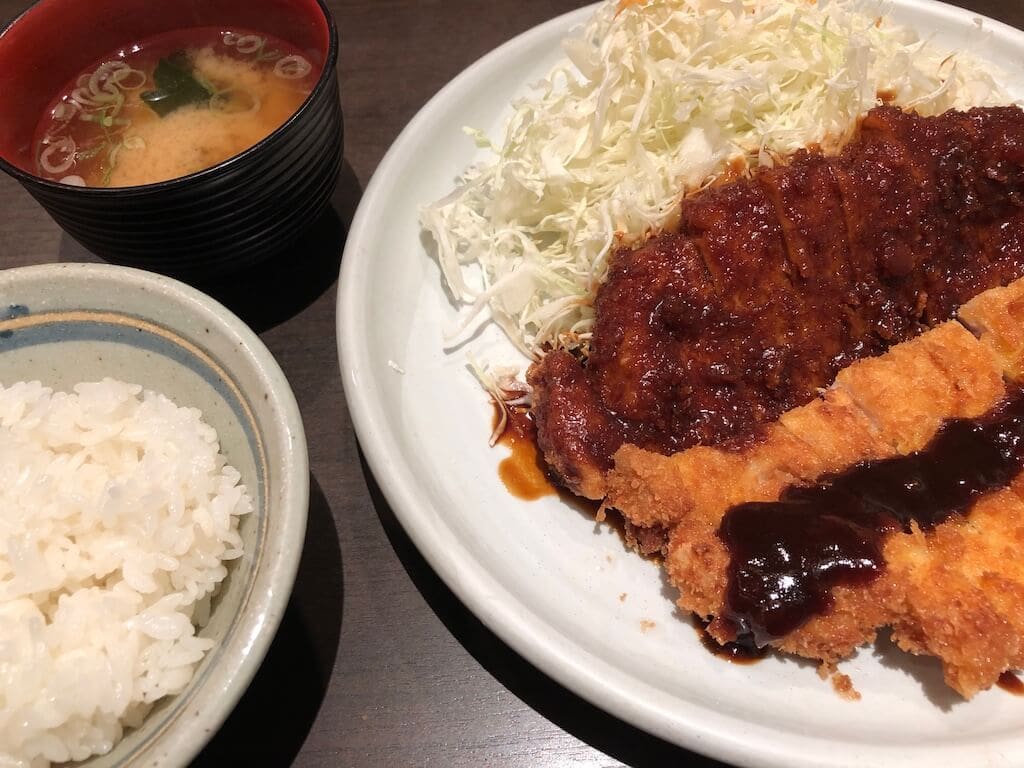
My absolute favourite Nagoya Meshi is Hitsumabushi, grilled eel served on rice. When I first tried this delicacy it felt like a revelation; that’s how delicious Hitsumabushi is. The eel is grilled over charcoal to be crispy outside and juicy inside and dipped in a dark and sweet soy sauce-based sauce. It goes perfectly with the rice and different spices such as Sansho pepper and spring onion or Nori seaweed flakes.
There are much more delicious Nagoya Meshi, and I really could talk about the different dishes all day long. That is why people joining my Nagoya Meshi Food Tour in Nagoya will learn so much because I really love to talk about it.
During the tour (which runs every day from 2:30 p.m.) participants get to try 7-8 Nagoya dishes, including Miso Nikomi Udon and Hitsumabushi which I mentioned above. I will talk more about the dishes and how to eat them, give you information on the restaurants we visit and also talk about the culture and history of the city.
It is the best way to learn about Nagoya.
What Japanese traditions have you adopted into your life so far?
Since my husband is Japanese, and I get along with my parents-in-law very well I had the unique opportunity to participate in some of the most amazing events and ceremonies here in Japan.
Japanese Funeral
Even though it was not a happy occasion, I went to a funeral this year and the whole ceremony was so fascinating to me. Everything is very different from what I was used to in regards to funerals in Germany. For example, the person who passed away is barred at home for a couple of days and family and friends will come to visit the deceased. The funeral is held over two days in the Buddhist style ending with the cremation of the body on the second day.
Japanese New Year Traditions
I also love to celebrate New Year according to the Japanese tradition, with a Shinto shrine visit in the middle of the night, to wish for good fortune in the new year. There is special New Years‘ food, which used to be made by the housewives, but is a lot of work and nowadays you can buy these elaborate festival Bento boxes at supermarkets, convenience stores, and department stores to be delivered to your house. This is how Japanese traditions are also evolving and changing over time.
I would like to tell you that we live in a house with paper doors, and Tatami mat rooms and that we sleep on our Futon beds, but that is not true. We live in a high-rise building in a small modern apartment not so different from other developed parts of the world. Though I love visiting traditional Japanese hotels called Ryokan, where you can experience the old ways of living in Japan.
What is the biggest Japanese festival held in Nagoya?
There are festivals and events (traditional and modern) going on all the time in Nagoya. The biggest festival in Nagoya is called Nagoya Festival. It takes place every year in October and is a procession of portable shrines through the streets of Nagoya. The mechanical dolls on the top of the elaborate shrines move, dance, and fight.
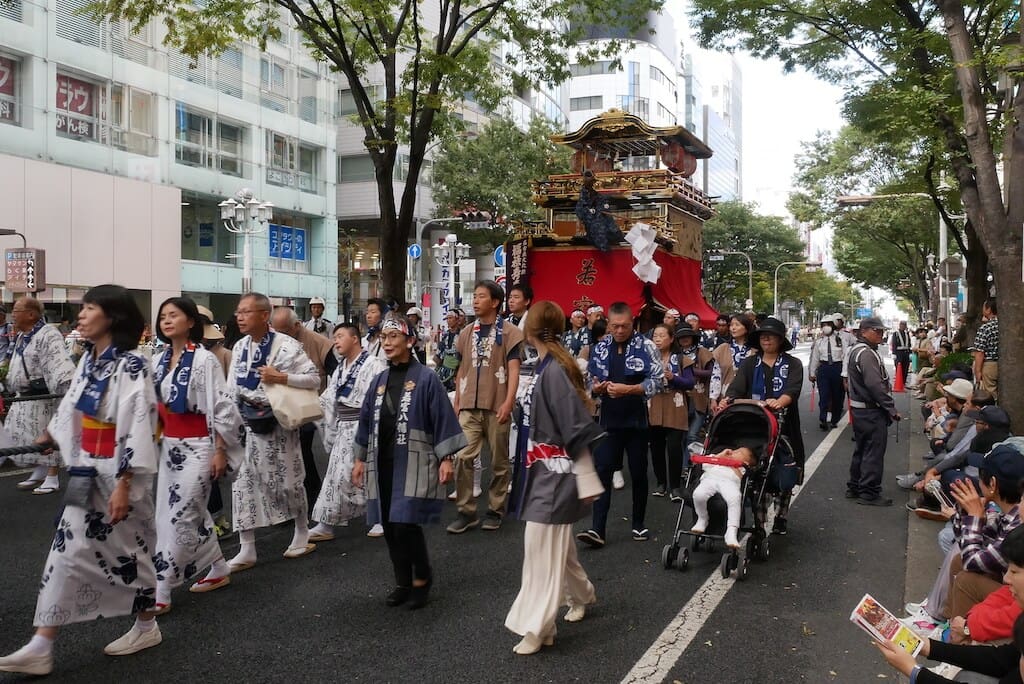
After the shrine procession, other processions are held, such as people dressed up in costumes from the Edo Period in the 17th century which is when Nagoya was founded.
Tell us about the must-visit local market in Nagoya?
There used to be a fish market in Nagoya, called Yanagibashi Central Market. Unfortunately, because fish consumption has gone down over the years it was recently decided to close down the market. A fact I am very sad about, because I didn’t even have the opportunity to visit.
What I do recommend all visitors to Nagoya (or Japan in general) do is a visit to the below-ground levels of a department store. There is usually a food area there where you can buy prepared foods, snacks, and sweets to take home, or try on the spot. It is like a wonderland for anyone who loves food.
What’s the best souvenir to get from Nagoya?
The Japanese people traditionally buy sweets and other snacks to give to family and friends when they visit another city or country (Omiyage), they do not really buy souvenirs for themselves.
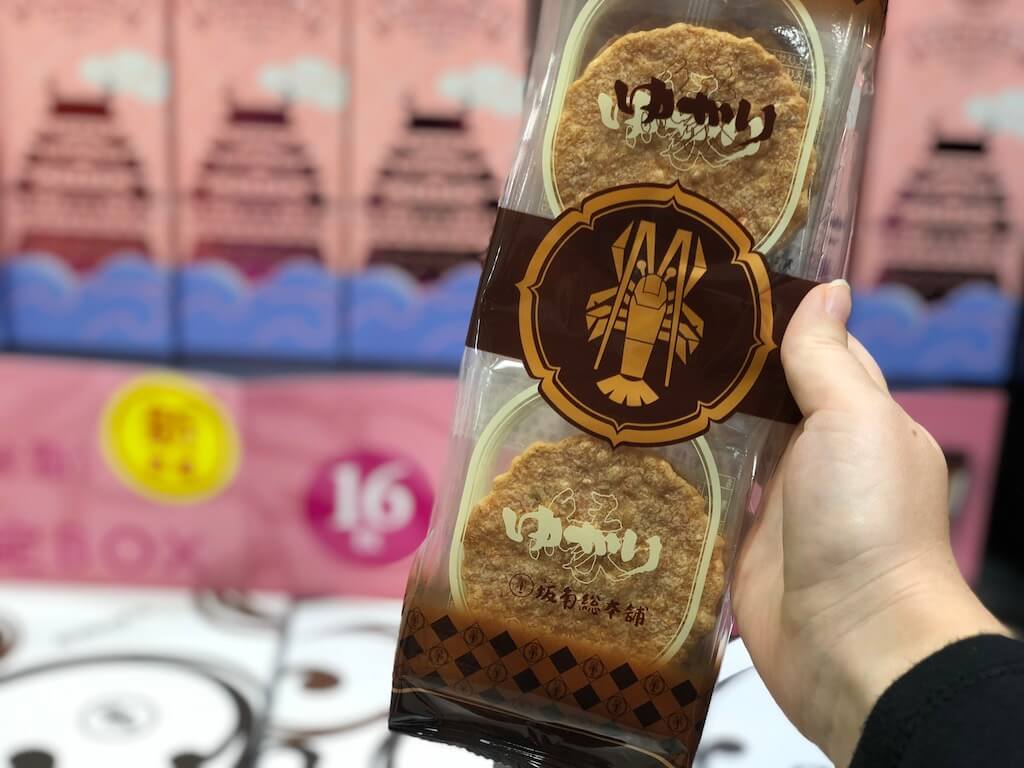
I do recommend following the example of the Japanese and buying some famous Nagoya sweets or snacks to take home to your friends and families. You can buy some Ebi Sembei (shrimp rice crackers) which are very crispy and taste very shrimpy and Uiro (a sweet made from rice flour, water, sugar and added flavours like red bean paste, chestnut, matcha, cherry blossom, or Yuzu citrus). If you want your family to try Miso Nikomi Udon you can even buy a set to make the dish at home.
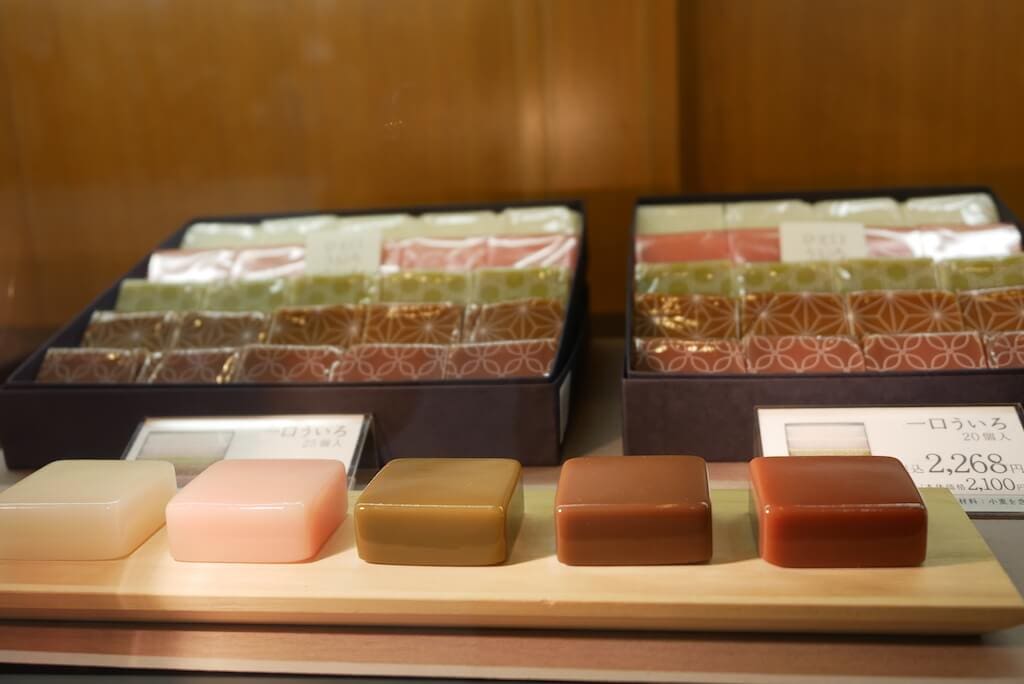
What is the one thing you really want people to know about Nagoya?
I want more people to come to visit Nagoya!
There is the famous golden triangle with are Tokyo, Kyoto, and Osaka and most tourists never make it to any other place in Japan. In general, I want tourists to be more interested in other parts of the country as well and Nagoya is a great base for off-beat day trips as well. These other places are great to learn more about older traditions and more authentic cultures.
As we are nearing the festive season — How are Christmas and New Year celebrated differently in Japan compared to in your home country?
I briefly mentioned New Year above but there are many differences here. For one it is a family holiday. People usually have about a week of holiday from the end of December to the beginning of January and everyone uses the opportunity to get home to see the family.
A lot of the New Year’s traditions revolve around food (as so much in Japan) with special dishes eaten at different times during the New Year festivities. There are Soba noodles that represent a long life (long noodles, long live), Mochi rice cakes that can be pulled long like cheese (long mochi, long live), and hundreds of other little dishes that wish for health, wealth, and good fortune in the coming year.
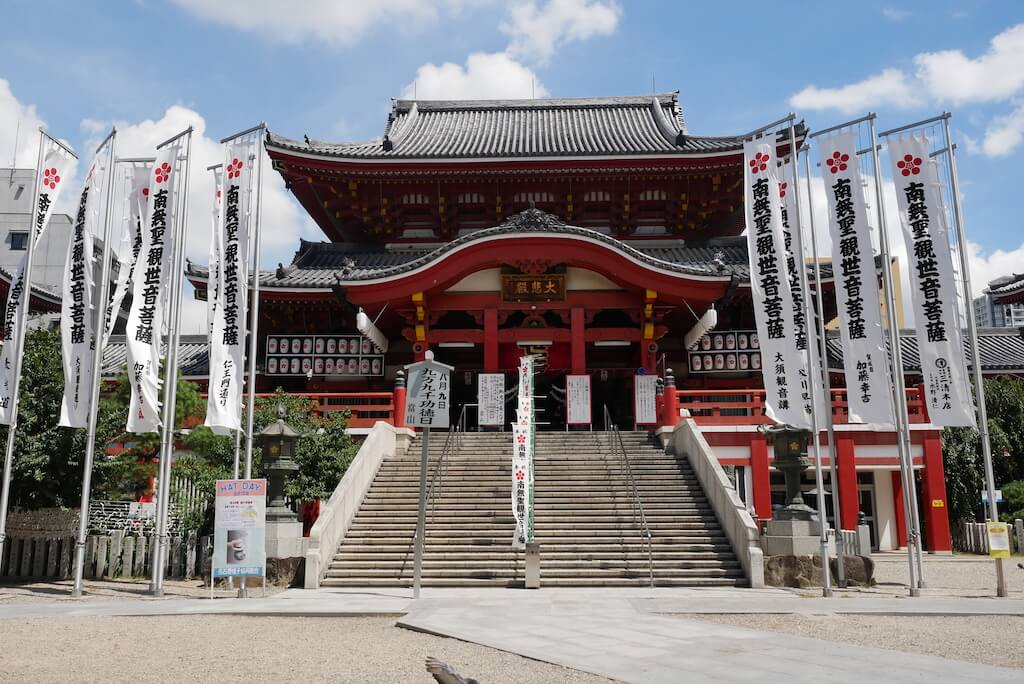
At midnight there is a tolling of the Buddhist temple bells. 108 tolls for the 108 evil desires we humans have. By tolling the bells we will be cleansed from those passions and be purified for the upcoming year. In Nagoya, the best place to experience the tolling of the bells is Osu Kannon in the Osu district, or Nittaiji also called Kakuozan.
The so-called Hatsumode, or first shrine visit of the year, is either during midnight of December 31st or during the first 3 days of January. People visit to make a wish to the gods for the new year. The best place to do Hatsumode in Nagoya is Atsuta Jingu, the most important Shinto shrine in the city, and the second most important Shrine in Nagoya. I like to do a trip to the Ise Shrine, which is the shrine of the sun goddess Amaterasu, and the most important shrine in the Shinto belief. It’s close to Nagoya and can be reached by car or public transport and is an amazing experience.
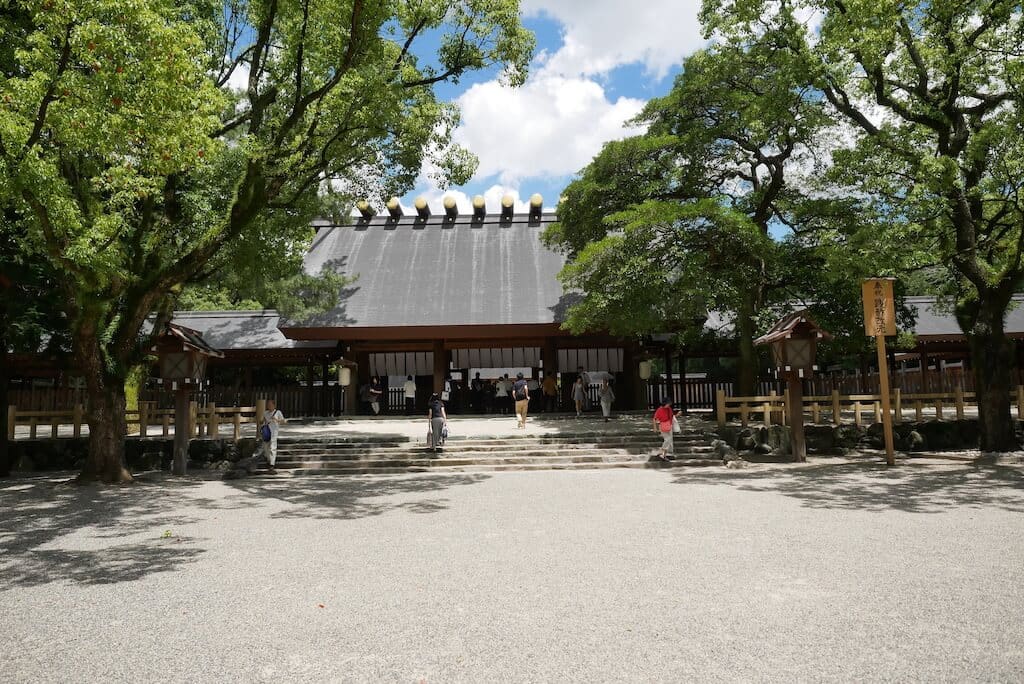
Japanese Christmas Traditions
Christmas is a different story entirely. Since it is not a traditional holiday in Japan it feels like a caricature of western Christmas.
There is Christmas decoration everywhere and western Christmas songs play in cafés and shops. In Nagoya, there is a European style Christmas Market selling sausages and mulled wine.
Typically couples will spend Christmas together going on a date and having a nice Christmas dinner at a fancy French or Italian restaurant. People eat Kentucky Fried Chicken for Christmas at home (someone must have confused turkey for Thanksgiving and made it into a tradition for chicken for Christmas).
For dessert, there is a Christmas Cake, a strawberry shortcake with lots of fresh creams.
As you might have guessed I am not a huge fan of this kind of Christmas, I would rather spend it at home in Germany with my family. But we cannot have everything and Japan has so much to offer, that I just have to live with this new kind of Christmas.
Thank you very much Lena for sharing highlights about Nagoya and Japanese culture from food to funerals. The next time I am in Nagoya, I am so going to join Lena’s food tour. In case you are visiting Nagoya first, do join the tour and let me know how is it.
Follow me on Instagram@KultureKween for more recent updates.
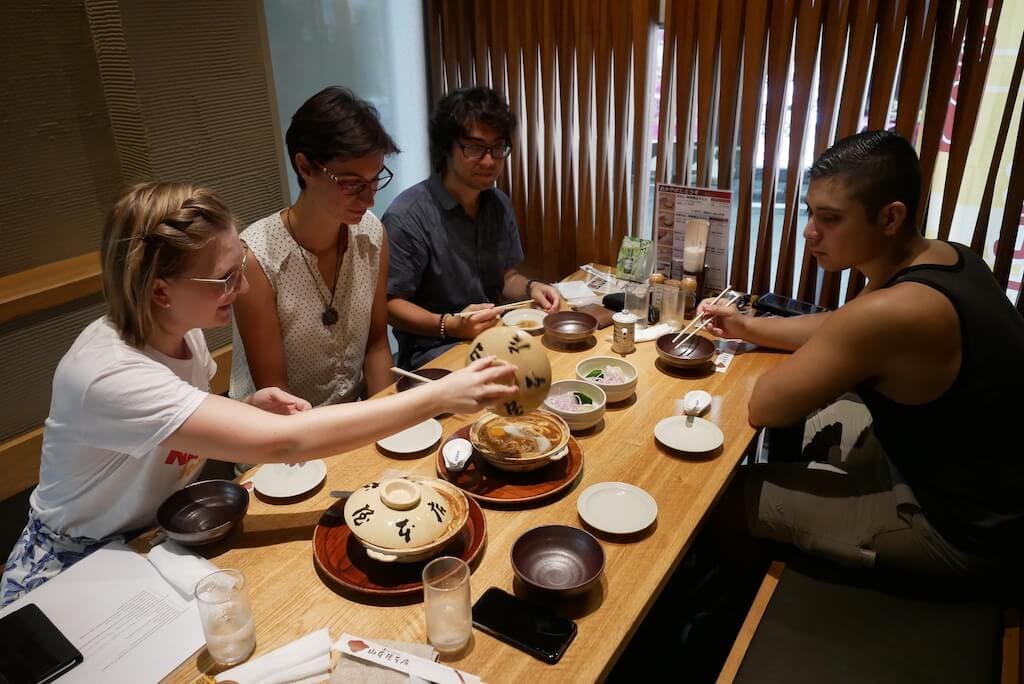
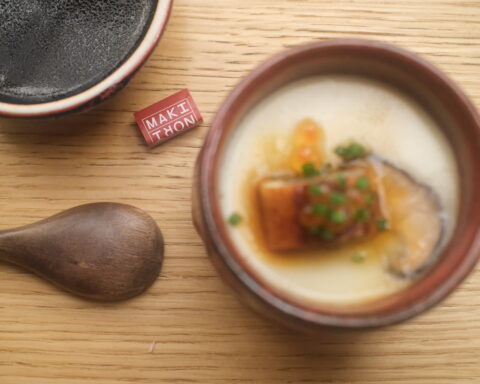
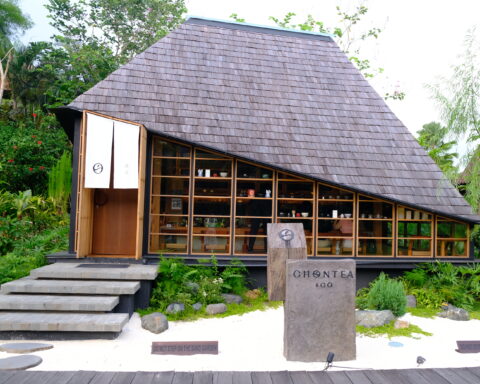
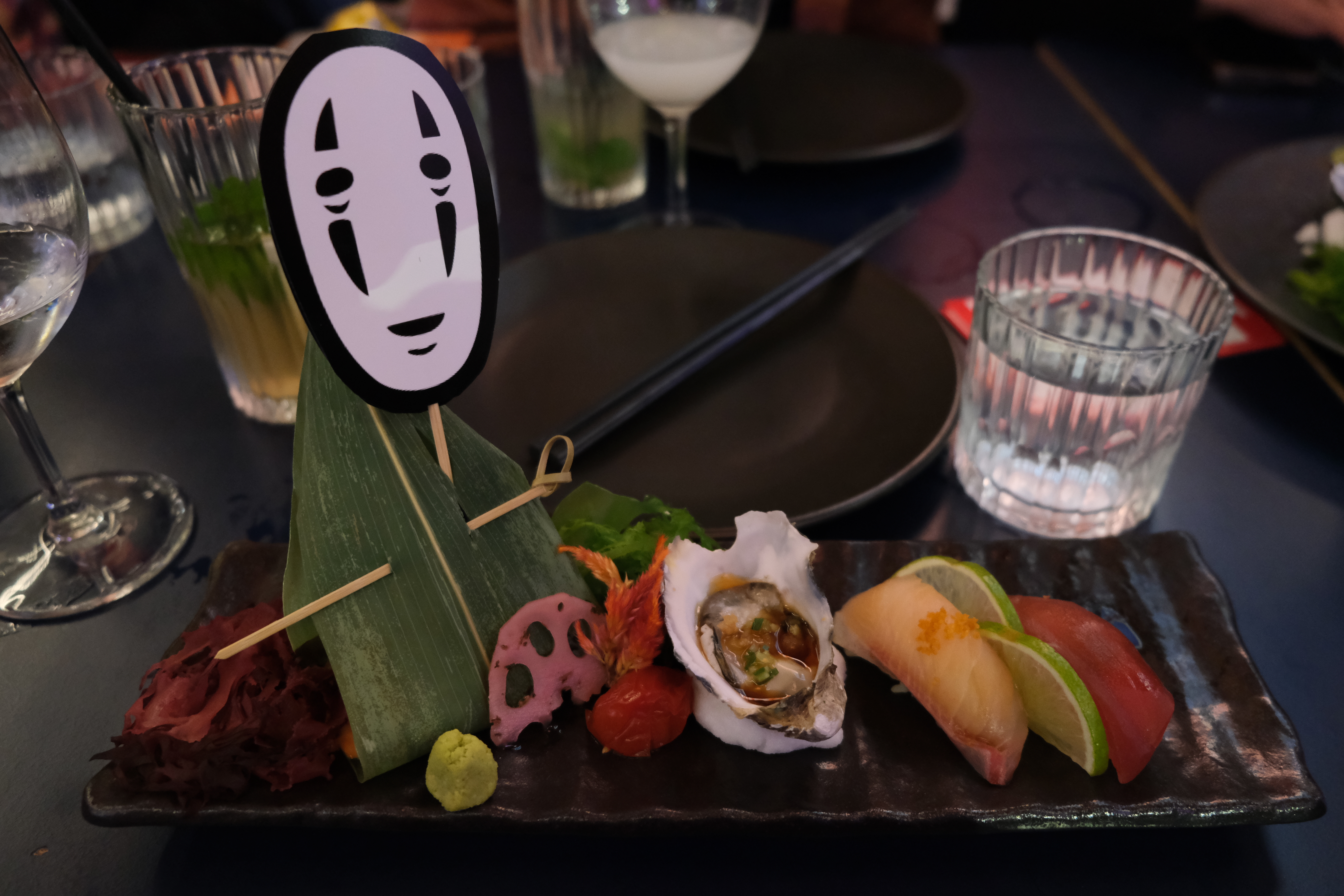
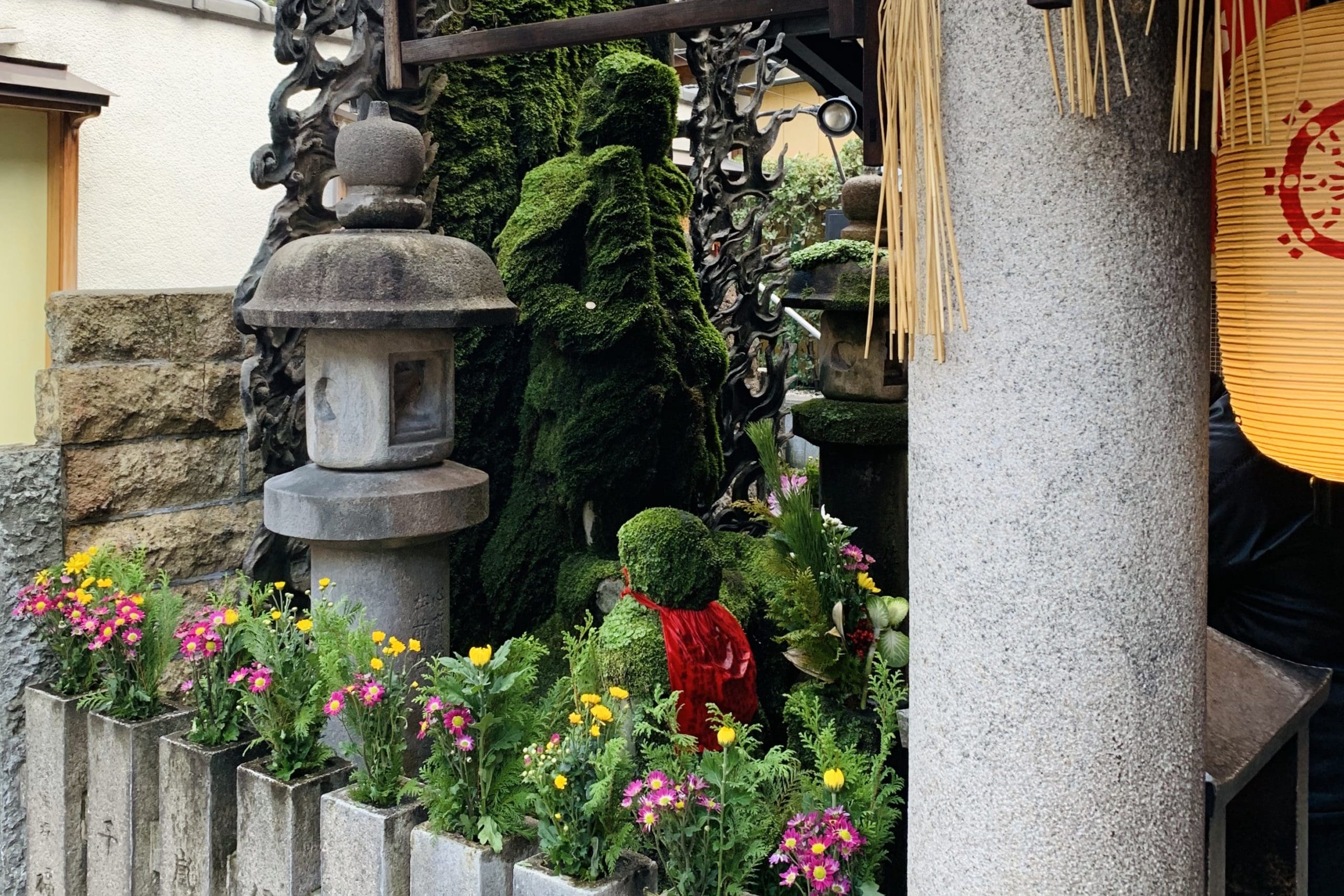
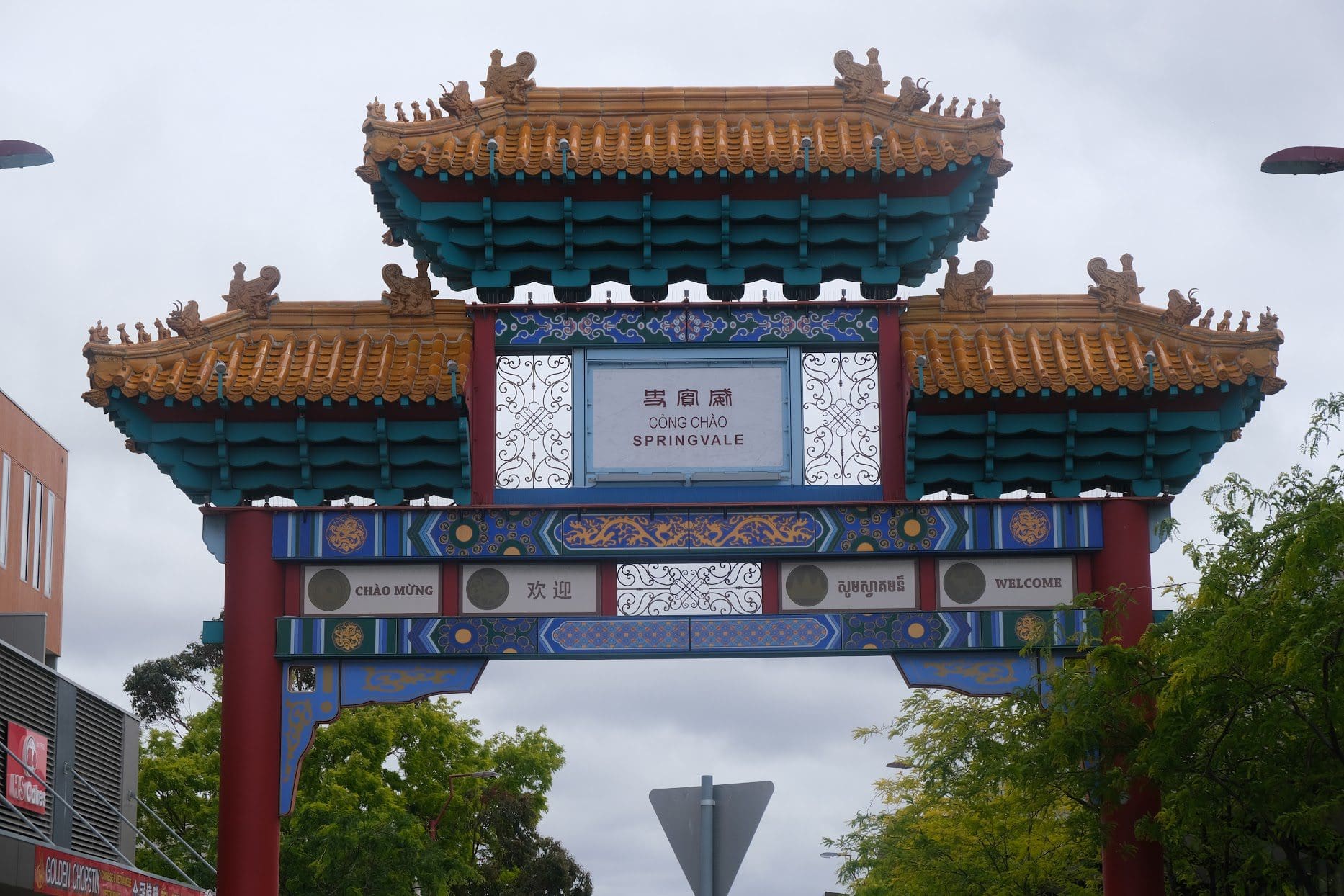
[…] Japanese Food and Culture Chat with Lena of Nagoya Foodie […]
[…] station. This market has everything to shop for; Japanese souvenirs, tour services, endless Japanese food and snack choices, a very interesting pagan-hippie store and high-end goods on the other side of […]
[…] the Japanese food I ate on my Japan trip has been amazingly delicious. It doesn’t matter whether it’s in […]
[…] food choices in Izakaya vary, but some basic ones are available in most of it such as kara-age, […]
[…] on the Nagoya Foodie tour in […]
[…] the Japanese food I ate on my Japan trip has been amazingly delicious. It doesn’t matter whether it’s in […]
[…] Japanese Food and Culture Chat with Lena of Nagoya Foodie […]